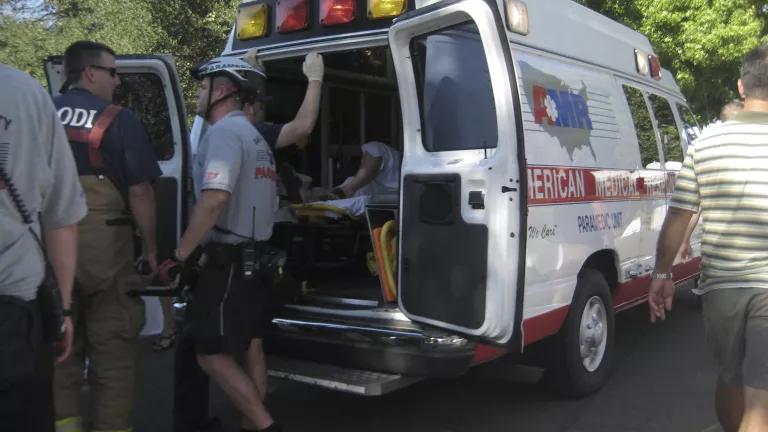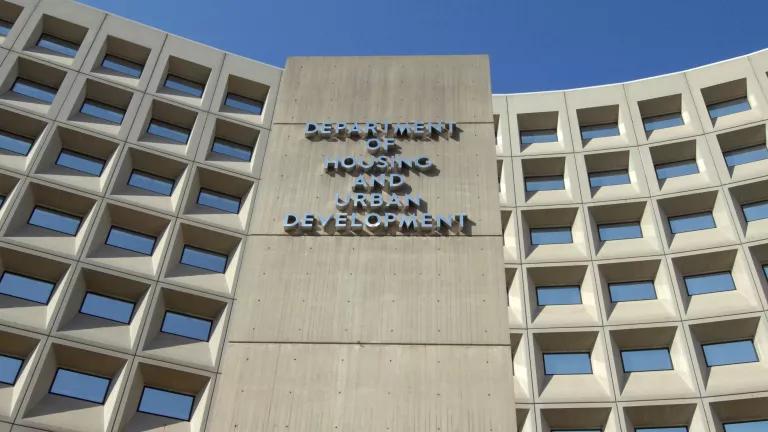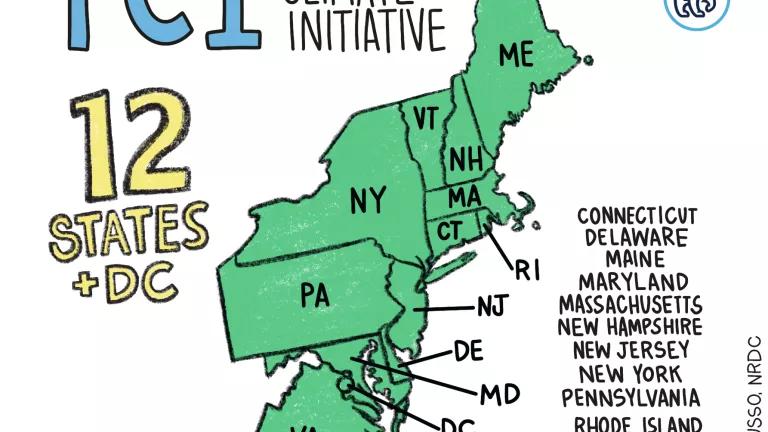National Public Health Week 2019: Climate Changes Health

You may have heard that climate change is bad for human health. But what, exactly, does that mean for you?
It depends.
Although climate change can affect anyone anywhere, the potential health harms you face depend on where you live, your age, your occupation, the color of your skin, and many other factors.
As part of National Public Health Week, the American Public Health Association is highlighting the unevenly distributed effects of climate change and how public health professionals can help keep people safe. Here at NRDC, we have a wealth of information on the topic, from high-level interactive maps to deep dive reports.
Just a few minutes on our website can reveal a dizzying array of potential health threats associated with rising temperatures, sea level rise, heavy rain, drought, and other manifestations of climate change.
However, you don’t need to remember all the details. Here are four important points:
1. Extreme heat is a serious—but underestimated—health threat across the country.
Extreme heat is, on average, the deadliest form of extreme weather in the United States. But even though nearly two-thirds of the U.S. population live in counties experiencing an unusual number of extreme heat days based on historical records, most Americans are blissfully unaware of the full health risks of heat. That’s partly because humans have a surprisingly short memory of what counts as “normal” weather. It’s also because heat is a “silent killer,” leaving its mark on our lives without the flashy visuals of hurricanes or wildfires.
2. The health harms of climate change layer onto existing vulnerabilities.
Americans have far from equal access to basic health care—let alone health care that is safe, affordable, and effective.
Despite progress in the last 15 years to narrow some disparities associated with gender identity, race, income, and other factors, many gaps remain. For example, a recent Congressionally-mandated report found that about 100 healthcare measures were worse for black people than white people. This includes the rate of emergency room visits for asthma, which since 2006 has been more than 3 times higher among black children than white children.
Climate change is already worsening asthma triggers such as wildfire smoke in Colorado, fungal infections in California, and allergenic pollen in Virginia. People in these states who lack access to health care and live in poor-quality housing—or in no housing at all—will bear the most severe burden of climate-fueled increases in asthma severity.

3. Our public health system needs federal help to prepare for climate change.
Climate change is affecting the health of Americans now, and the situation will only get worse as heat-trapping emissions from fossil fuels increase. But many of our nation’s underfunded public health agencies lack the knowledge and capacity to plan responses to climate-related health threats, let alone implement those plans.
The Centers for Disease Control and Prevention (CDC) has been boosting the ability of agencies like the Michigan Department of Health and Human Services to protect people from climate change. CDC also hosts national tracking databases that help public health researchers understand the scope and scale of climate-sensitive health outcomes like Lyme disease and emergency room visits for heat-related illnesses.
Unfortunately, President Trump wants to eliminate CDC’s Climate and Health Program altogether and reduce funding for the National Environmental Public Health Tracking Network. Congress didn’t give Trump his way after last year’s same attempt, and it will be up to our elected leaders to hold the line this year too.
4. Climate action is good for our health, now and into the future.
Cutting climate-changing pollution will help our health in the long term by limiting future warming and weather extremes. For example, check out the Fourth National Climate Assessment’s projected changes in annual heat-related deaths in 49 cities.

The map on the left shows that drastically cutting carbon pollution can minimize projected increases in heat-related deaths. It’s important to note that benefits from health preparedness (detailed above) are not considered in these projections, and could reduce the death toll even further.
Wait, there’s more good news!
Cleaning up power plants, making our homes and businesses more energy efficient, and increasing the number of clean cars and car-free transportation options also deliver many immediate health benefits. That’s because these actions can improve air quality, encourage more physical activity, and reduce electricity bills—which particularly helps low-income people who may have to choose between paying for utilities and other necessities.

This National Public Health Week, we invite you to learn more about what climate change means for health where you live. Then, check out a local event, or join the conversation on social media with the hashtag #NPHW.




